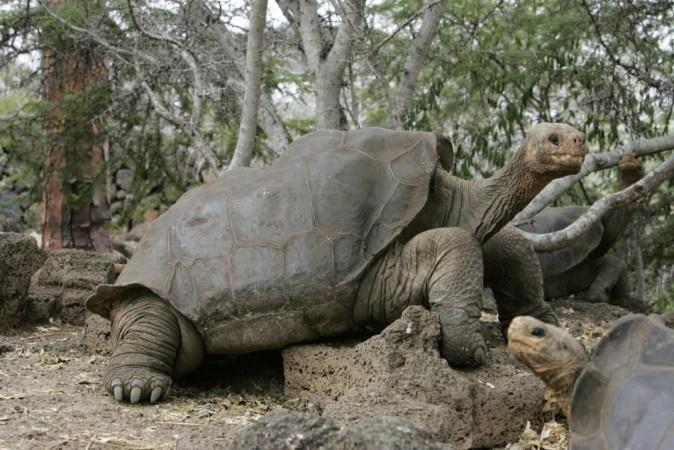
A giant tortoise, which is believed to be the last member of the Pinta island subspecies, has died at the Galapagos National Park on the Galapagos Islands.
The tortoise named Lonesome George had gained popularity and became an ambassador of the islands which is off Ecuador's coast, following its failure to produce an off-spring.
George was found dead by his keeper Fausto Llerena. "This morning the park ranger in charge of looking after the tortoises found Lonesome George, his body was motionless," Reuters quoted Edwin Naula, the head of the Galapagos National Park as saying.
"His life cycle came to an end," he said.
With the death of George, the Pinta subspecies has become extinct.
Lonesome George's age is not yet known but he was believed to be 100 years old when he died, thus making him the young adult of the Pinta subspecies as these species are believed to survive for at least 200 years.
The park officials are planning to perform a post-mortem to determine the cause of his death. Naula said that the national park has planned to preserve George's body so that it can be displayed in the park.
George was first found by a Hungarian scientist on the Galapagos island of Pinta in 1972. For years, scientists have tried to make George to reproduce, but the tortoise had been unsuccessful in mating.
He was provided with various mates but his attempts to reproduce have been unsuccessful. Although George was able to mate when two tortoises were brought from nearby wolf Volcano, the eggs were not able to fertile.
George had become a big tourist attraction in the Galapagos Islands attracting several tourists to the place. Earlier the tortoise population had decreased due to the presence of humans who hunted the species for their meat until they were at the brink of extinction.
Later the park along with Charles Darwin foundation (Darwin formulated his theory of evolution after visiting the islands) ran a breeding programme that had significantly helped to increase the numbers of various tortoise species to 20,000 from mere 3,000 in 1974.

















